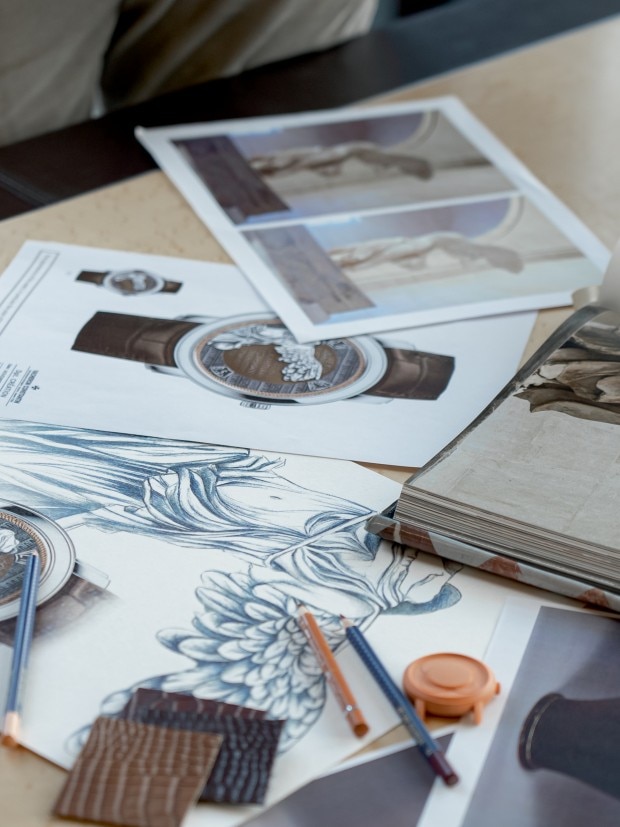A dazzling collaboration with the Louvre
In close collaboration with the Louvre’s museum teams, Vacheron Constantin's designers and developers have come together to create a new series of Métiers d'Art watches directly inspired by emblematic masterpieces of the Louvre.
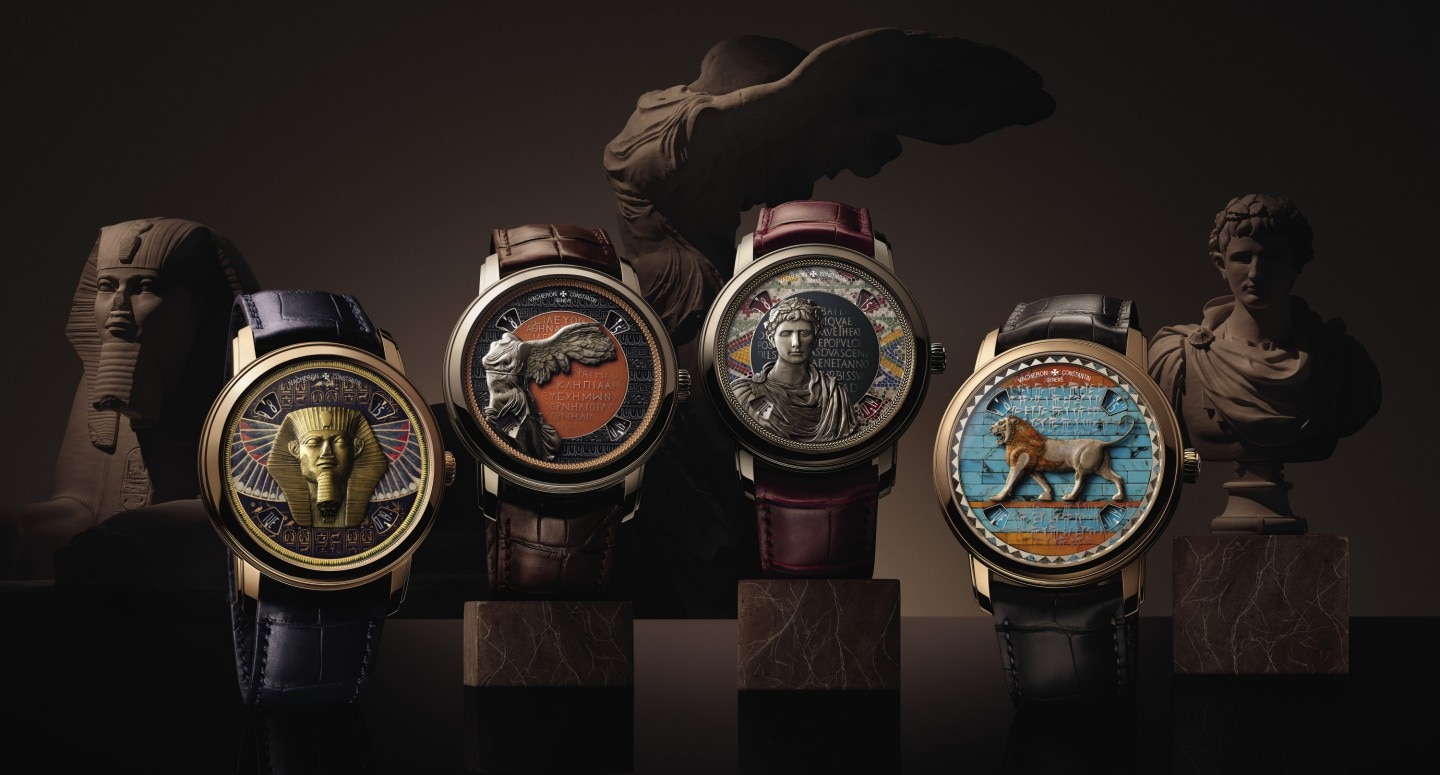
Four civilisations in the spotlight
In agreement with the teams at the Louvre – a museum that is a reference in the field of works from ancient civilisations, the selection was based on four main themes covering ancient civilisations and four major works representing them. Thanks to the richness and originality of the themes and the remarkable quality of execution, these watches all feature narrative content magnificently conveying the splendour of fine craftsmanship.
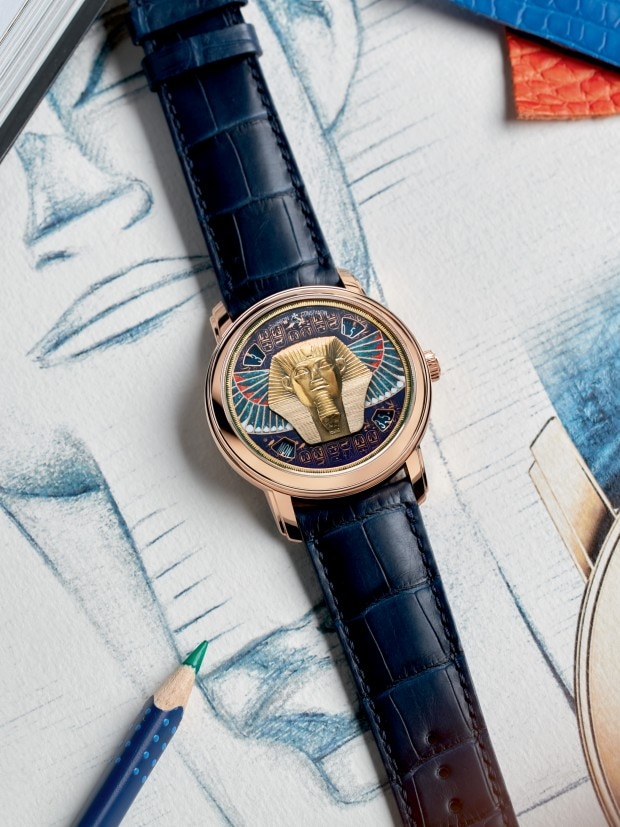
Grand sphinx de Tanis
One of the largest sphinxes preserved outside Egypt, it arrived in the Louvre in 1826, as part of the collection of the British consul Henry Salt. A royal symbol, the sphinx is a hybrid comprising the body of a recumbent lion and a human head wearing the Nemes – the royal headdress par excellence – as well as the beard worn only by sovereigns. All the power of the pharaoh is expressed through this fabulous animal.

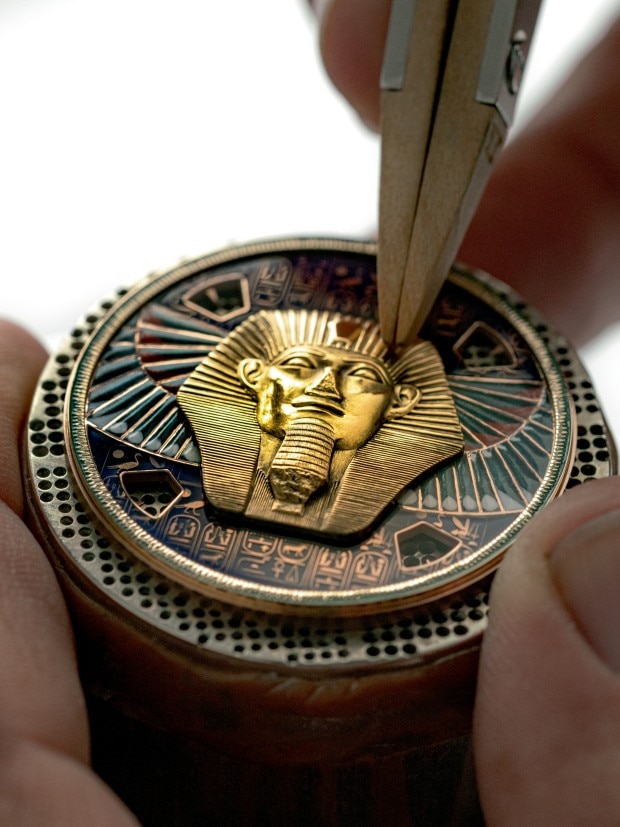
Métiers d'Art Tribute to great civilisations - Grand sphinx de Tanis
On this monumental Grand sphinx de Tanis model, the work of cutting the stone with polished surfaces is admirable in its precision. The main dial is made of enamel whose deep colour, is obtained after six firings in the kiln. The necklace is trimmed with petals that are reproduced in champlevé enamel sprinkled with inclusions to give the outer frieze an aged appearance. Under this necklace, a winged hawk with a ram's head appears and the plumage of its wings is picked up on the dial – again in champlevé enamel. The last cultural component is the sapphire crystal bearing the gold applique and engraved by metallisation with hieroglyphic inscriptions from a cartouche of the sphynx of Tanis.

Lion de Darius
The Achaemenids formed one of the greatest empires to have ever existed in antiquity. With a territory stretching from present-day Pakistan to the shores of the Black Sea, and from the steppes of central Asia to Egypt and Libya, it united the oldest civilisations in the Middle East. Darius the Great is remembered for his confrontation with the Greek cities who succeeded in stopping his armies on the Plain of Marathon. The Frieze of Lions, a glazed brick decoration, was located in the first courtyard of the palace of Darius the Great in Susa.

Métiers d'Art Tribute to great civilisations – Lion de Darius
The prominent frieze of lions was thus a declaration of royal power, embodied by the king of animals. Made of siliceous glazed bricks that are bound with lime mortar, this decoration mingling realism and powerful stylisation is exemplary of masterpieces of Achaemenid Persian art.
The frieze surrounding the dial was inspired by the decoration of another well-known work from the Palace of Darius: the Frieze of Archers. This ornamentation, consisting of a juxtaposition of triangles, is made of engraved metal and champlevé enamel with "ageing" inclusions. The writing elements engraved by metallisation on the sapphire crystal are one of the first written texts by Darius upon his arrival in power.

Victoire de Samothrace
This statue of Victory, a winged goddess resting on the prow of a warship, was discovered in 1863 on the island of Samothrace in the northern Aegean Sea. Excavated from a sanctuary dedicated to the Great Gods, it depicts an offering linked to a naval victory.

Métiers d'Art Tribute to great civilisations – Victoire de Samothrace
The drapery of the statue, ruffled by the wind with a large flow of fabric falling in deep folds between the legs, represented a major difficulty for the engraver in charge of reproducing all its subtleties.
The centre of the main dial is enamelled in brown, a colour that is very difficult to achieve and required a mixture of rare enamels as well as six firings in the kiln. The periphery features grisaille enamelling depicting the decorative friezes taken from two Greek vases. The ancient Greek script engraved by metallisation on the sapphire crystal bearing the applied Victory is taken from a second AD votive stele discovered in Samothrace.

Buste d’ Auguste
This bust of Octavian Augustus, the adopted son of Caesar, represents him crowned with an oak wreath, a distinction awarded him by a Senate decision in 27 BC, when he became the principate of Rome. Following his conquest of Egypt, he ended a long period of civil wars marking the end of the Republic and becomes master of Rome. He is now considered the first Roman emperor and lays the foundations of a political organization that would last another four centuries.


Métiers d'Art Tribute to great civilisations – Buste d’Auguste
The carved gold applique reproducing this Buste d’Auguste offers a striking sight in which the drape of the cape accompanying the breast plate, secured by a fibula, echoes the curling locks held by the oak crown. The centre of the dial is enamelled in blue-green, while its periphery is adorned with stone micro-mosaic. This is the famous fourth-century mosaic discovered in Lod, Israel, that served as the inspiration for the ornamentation motifs found on the dial periphery. No less than seven different types of stones – 660 in all – were used to compose this micro-mosaic.
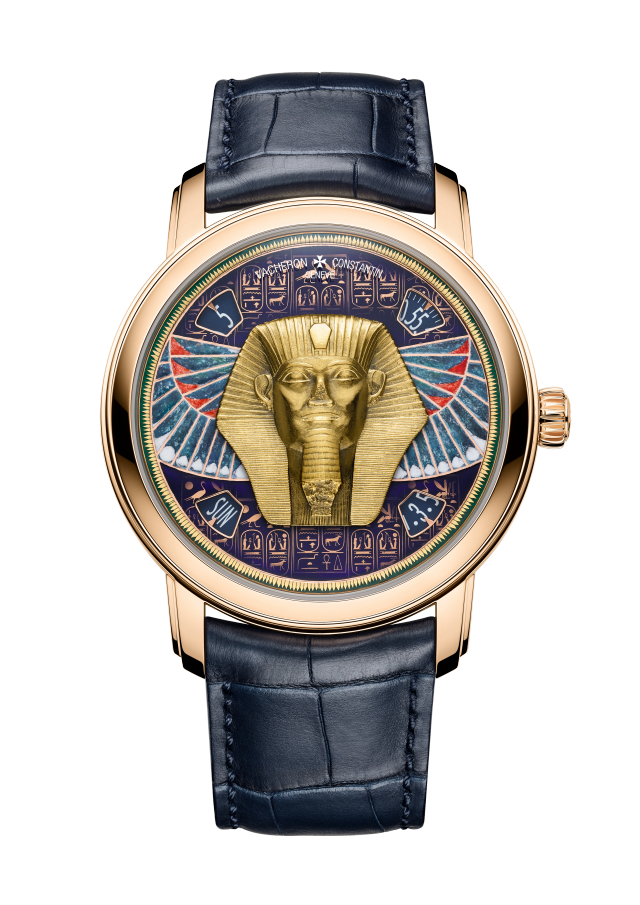
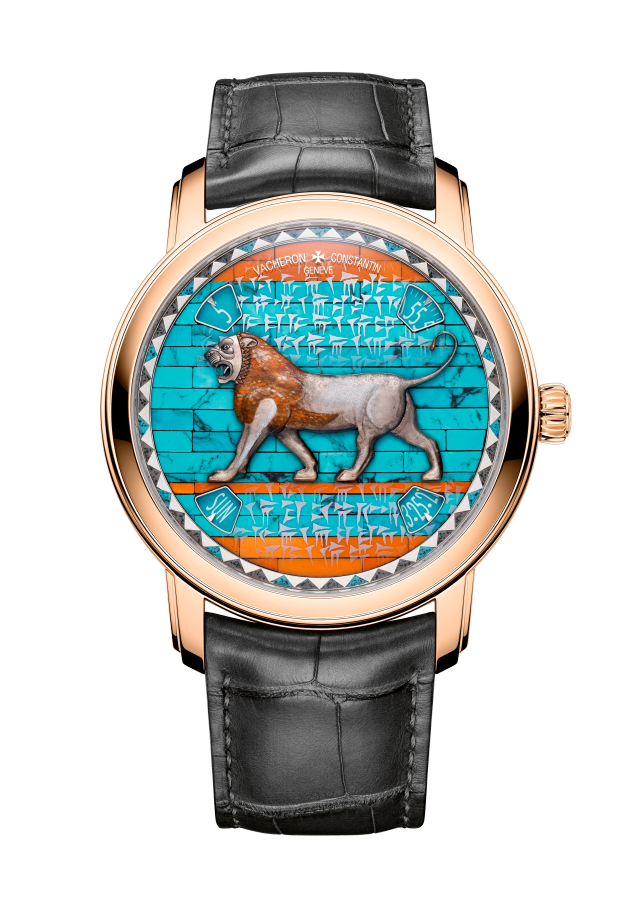

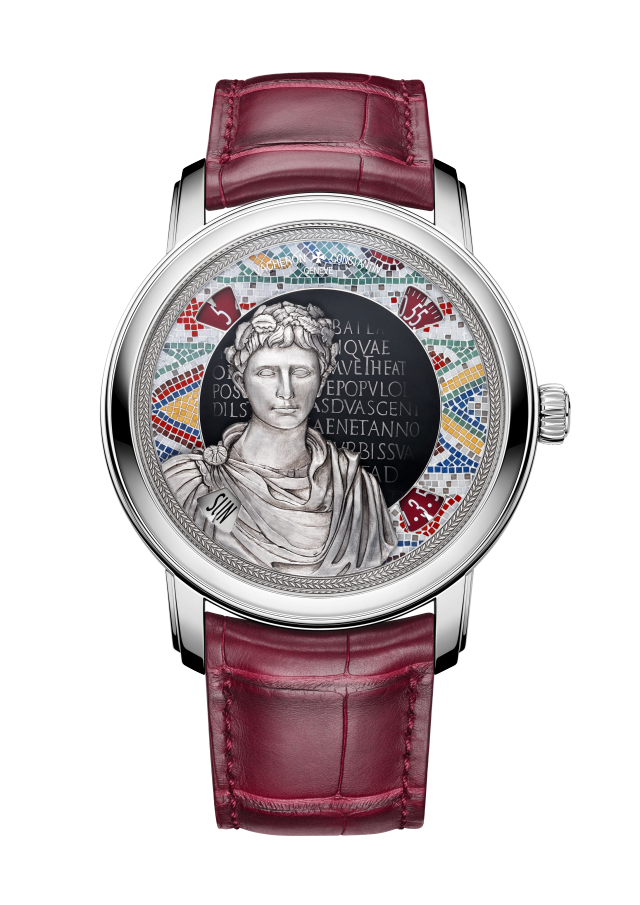

A calibre dedicated to artistry
To power these Métiers d'Art Tribute to great civilisations watches, Vacheron Constantin has chosen its self-winding Manufacture Calibre 2460 G4/2, which features four discs indicating the hours, minutes, days and dates. The apertures for reading the time and calendar indications, symmetrically positioned around the dial periphery, thus leave a vast field of expression for the artisans. No hands disturb the view of these miniature masterpieces.
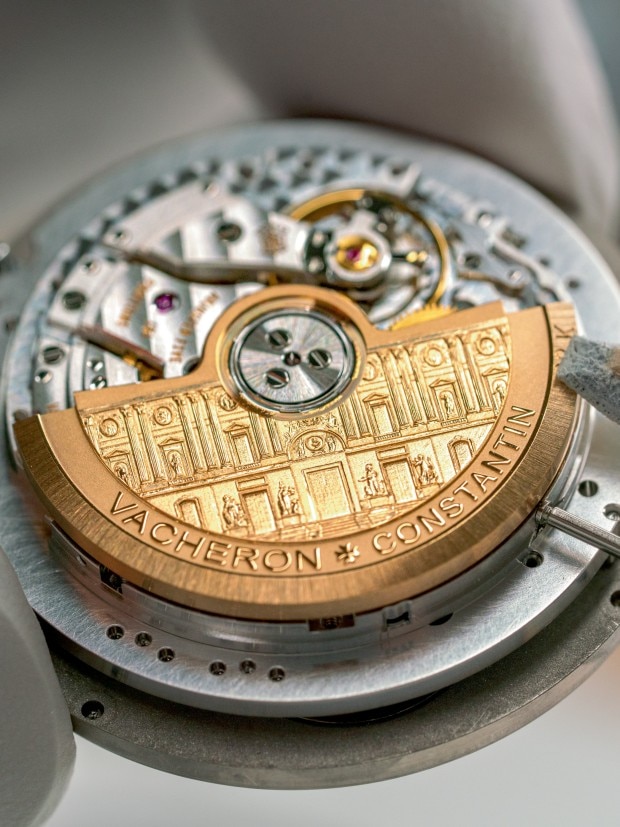
On the back of the movement, beating at a rate of 4 Hz (28,800 vibrations per hour) and comprising 237 components, the oscillating weight has also received special attention. It features a depiction – based on an 18th century lithograph – of the east facade of the Louvre and its magnificent colonnade inspired by the work of Louis Le Vau and Claude Perrault, based on an 18th century etching.
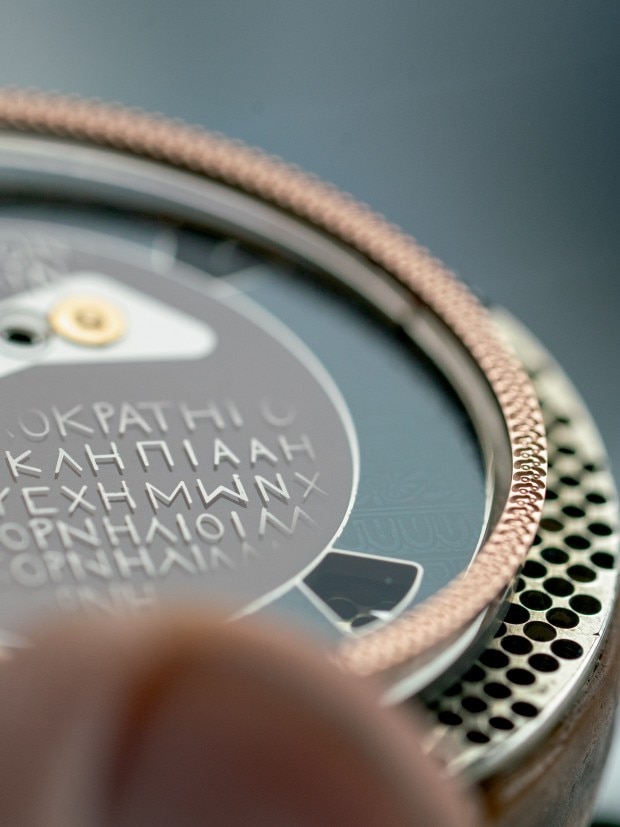
A clever composition
As the artistic composition of these watches includes the representation of symbolic works in the form of sculpted appliques, as well as various written and ornamental elements, Vacheron Constantin has devised a system of nesting several constituent parts. The movement is topped by the dial surrounded by a frieze. These two distinct and concentric components provide scope to express the talents of the master artisans. The dial ornamentation is inspired by works in the Louvre collections representing the decorative arts of different periods.
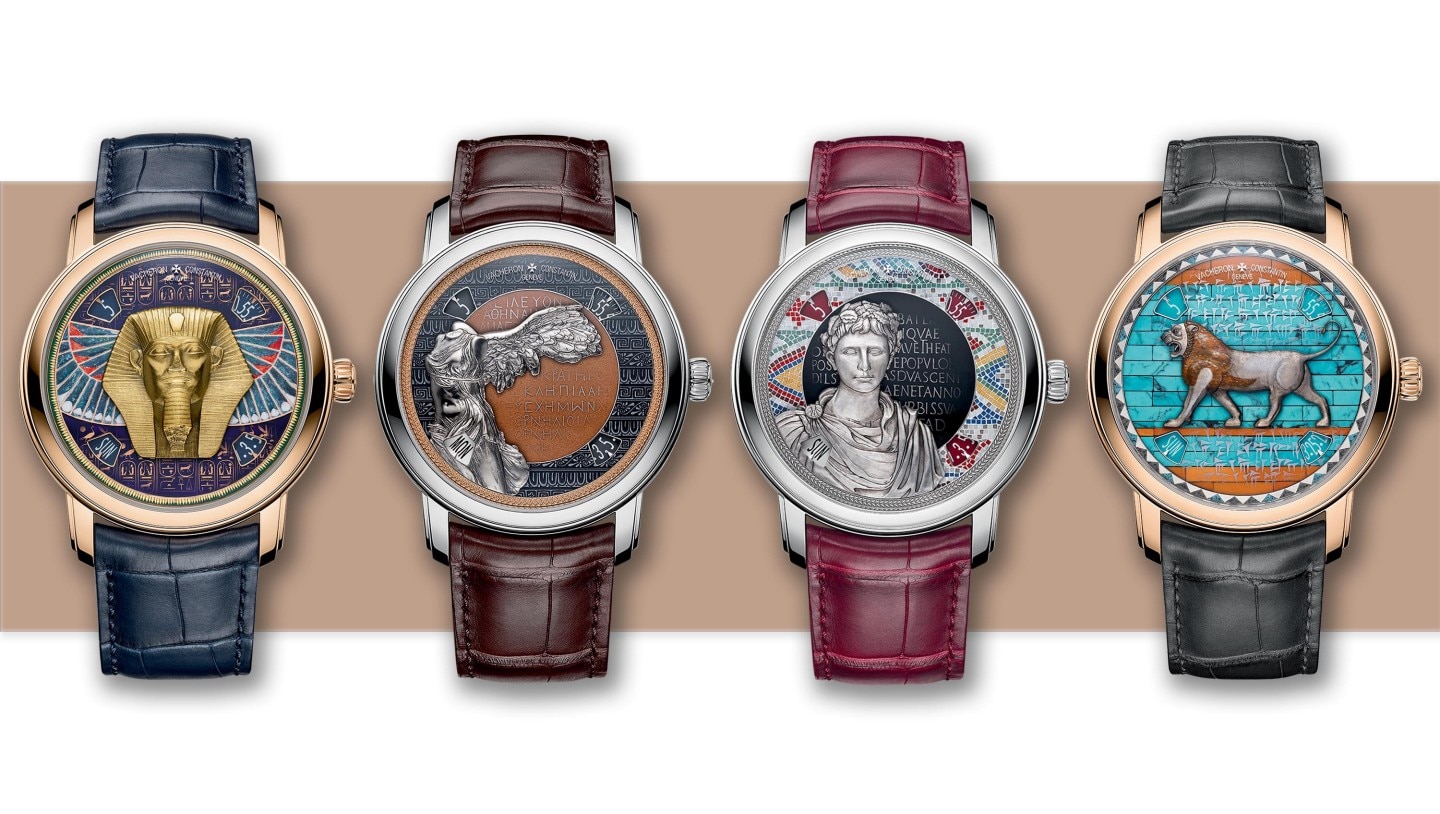
A shared vision of culture
Discover the design process in an exclusive series of videos within the Louvre's and Vacheron Constantin's artistic departments.
VACHERON CONSTANTIN AND THE LOUVRE, AN ARTISTIC AND CULTURAL PARTNERSHIP
Throughout its history, Vacheron Constantin has demonstrated a deep commitment to art and culture, embodied in numerous partnerships. Its relationship with the Louvre is a natural extension of this celebration of beauty and the constant pursuit of conservation, preservation and the transmission of heritage.
